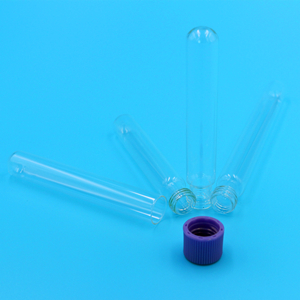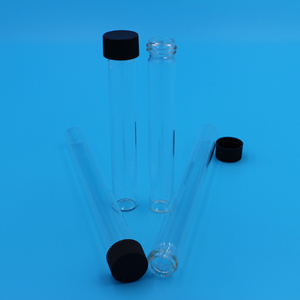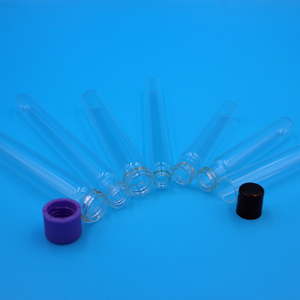Test tubes are for general chemical work are usually made of glass, for better resistance to heat and corrosive chemicals and longer life. Tubes made from expansion-resistant glasses, mostly borosilicate glass (or fused quartz) can withstand high temperatures, up to several hundred celsius.
Chemistry tubes are available in a multitude of lengths and widths, typically from 10 to 20 mm wide and 50 to 200 mm long.[1] The top often features a flared lip to aid pouring out the contents.
A chemistry test tube typically has a flat bottom, a round bottom, or a conical bottom. Some test tubes are made to accept a ground glass stopper or a screw cap. They are often provided with a small ground glass or white glaze area near the top for labelling with a pencil.
Louis Lumière with a microscope and some test tubes.
Test tubes are widely used by chemists to handle chemicals, especially for qualitative experiments and assays. Their spherical bottom and vertical sides reduce mass loss when pouring, make them easier to wash out, and allow convenient monitoring of the contents. The long, narrow neck slows down the spreading of gases to the environment.
Test tubes are convenient containers for heating small amounts of liquids or solids with a Bunsen burner or alcohol burner. The tube is usually held by its neck with a clamp or tongs. By tilting the tube, the bottom can be heated to hundreds of degrees in the flame, while the neck remains relatively cool, possibly allowing vapours to condense on its walls. A boiling tube is a large test tube intended specifically for boiling liquids.
A test tube filled with water and upturned into a water-filled beaker is often used to capture gases, e.g. in electrolysis demonstrations.
A test tube with a stopper is often used for temporary storage of chemical or biological samples.



